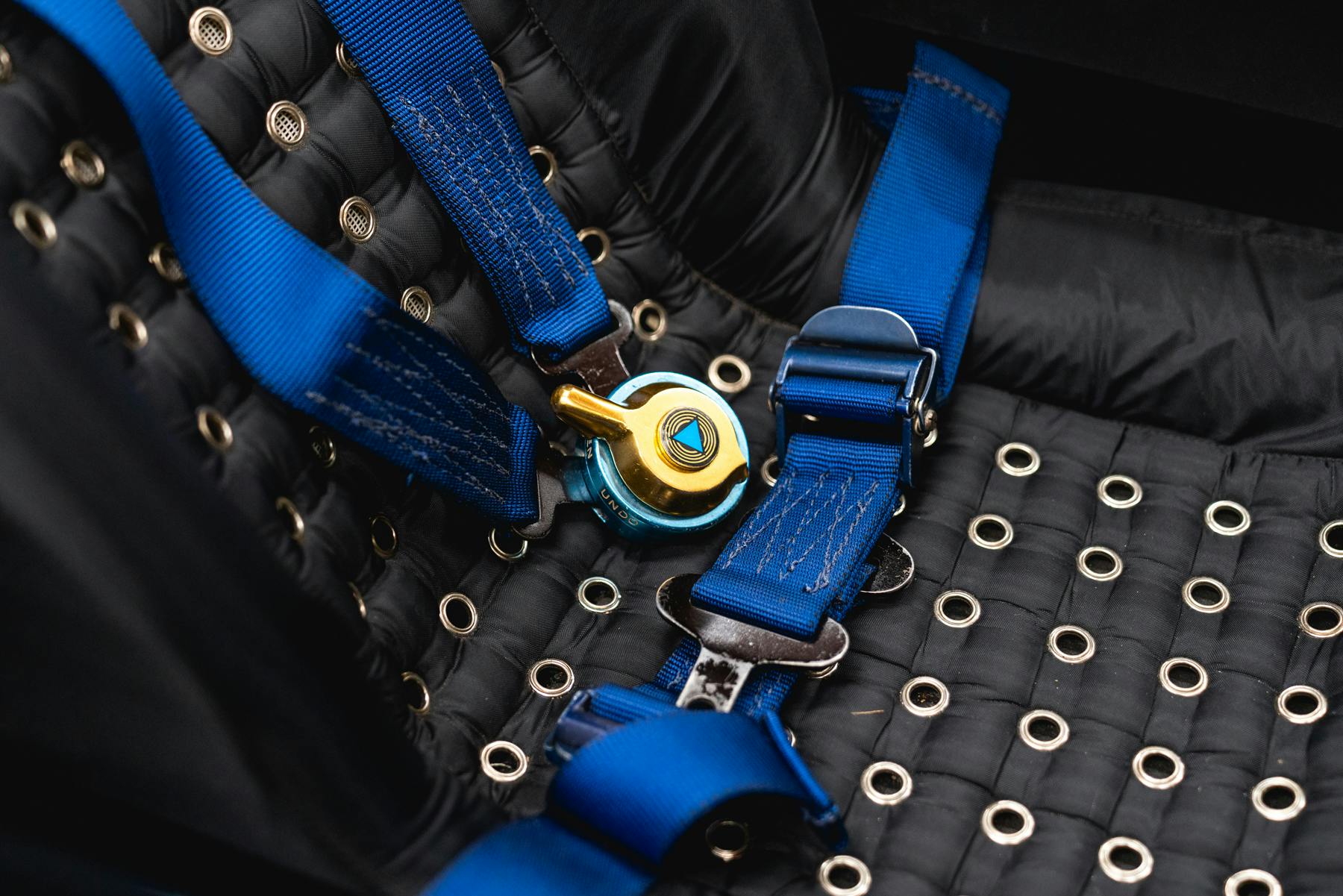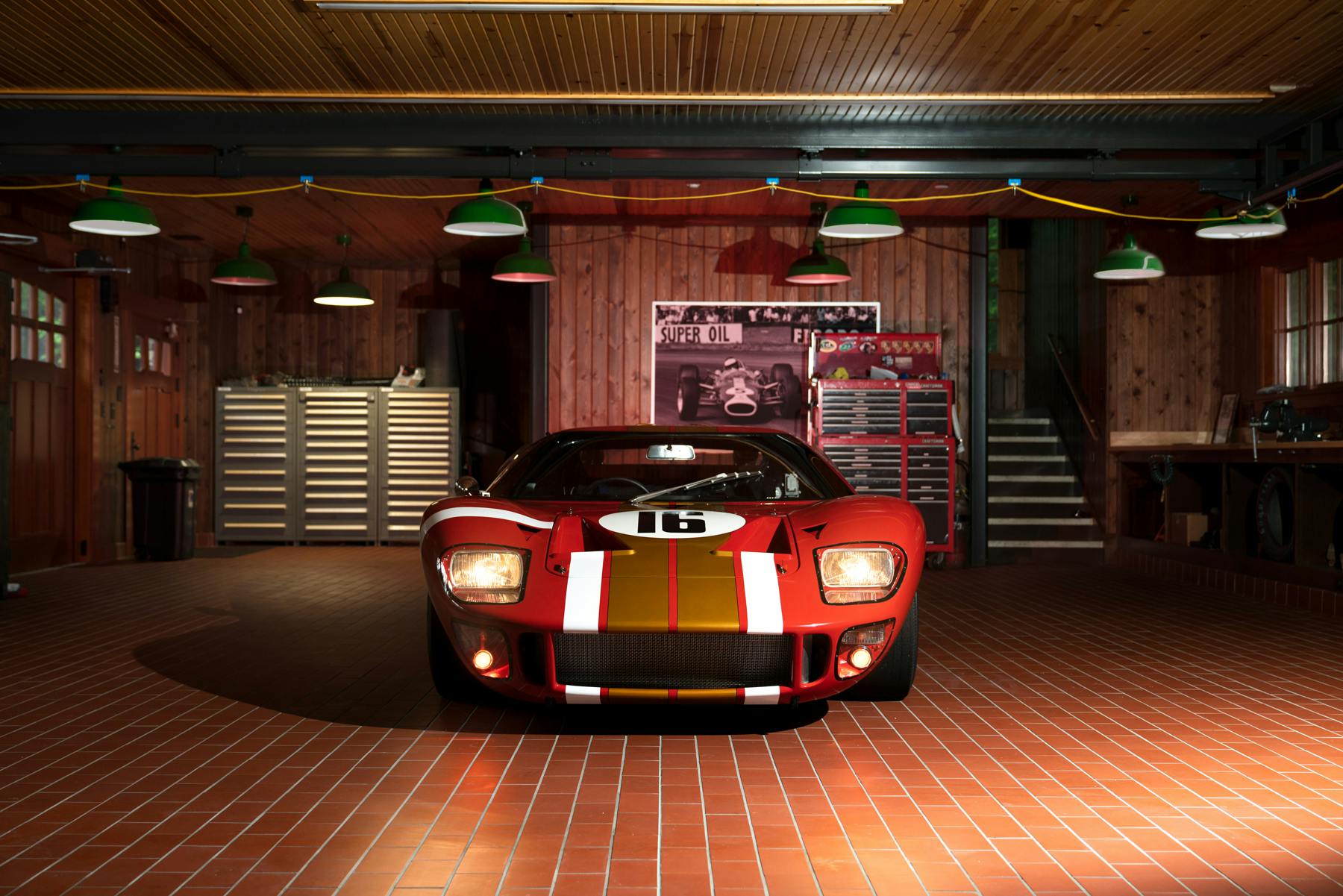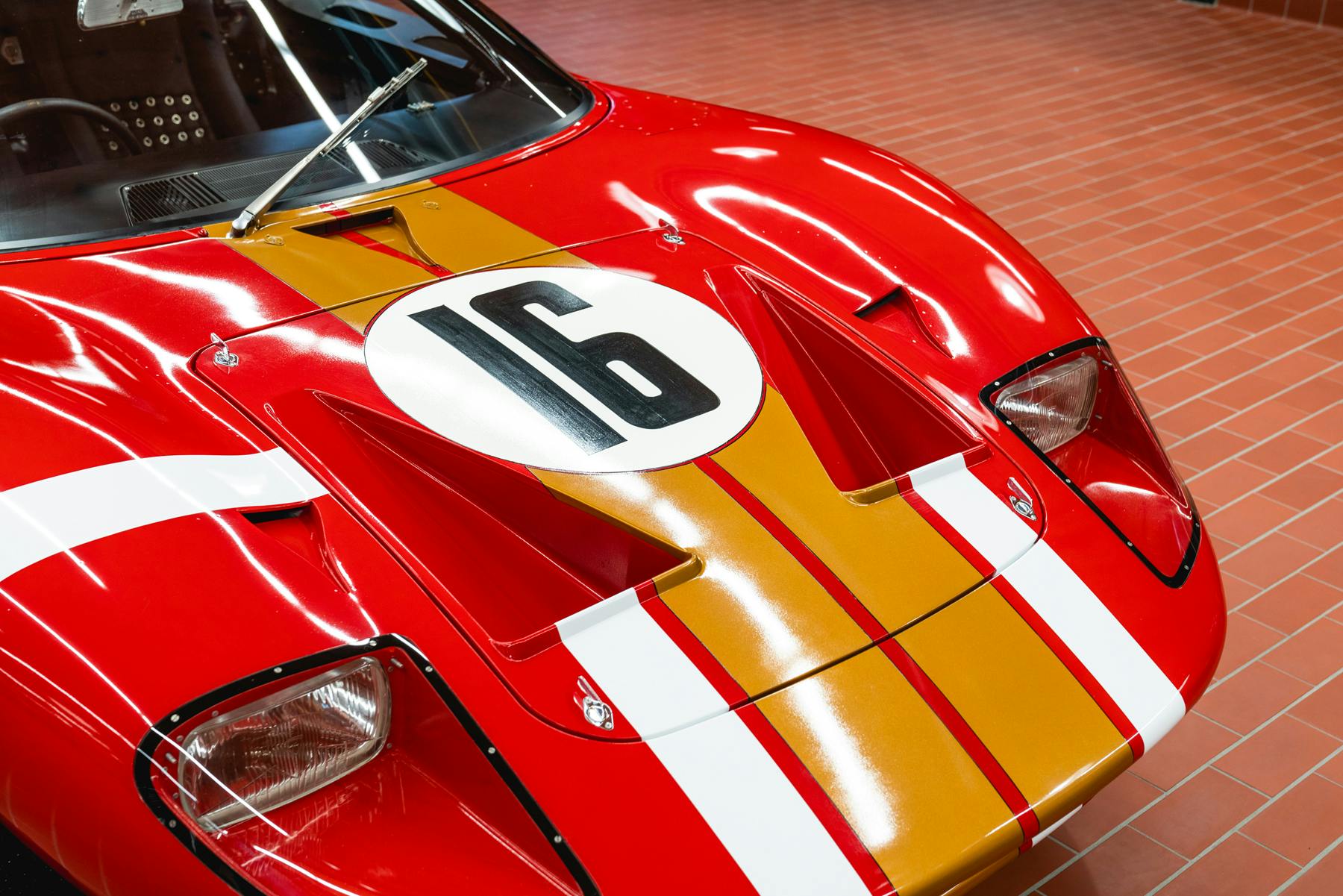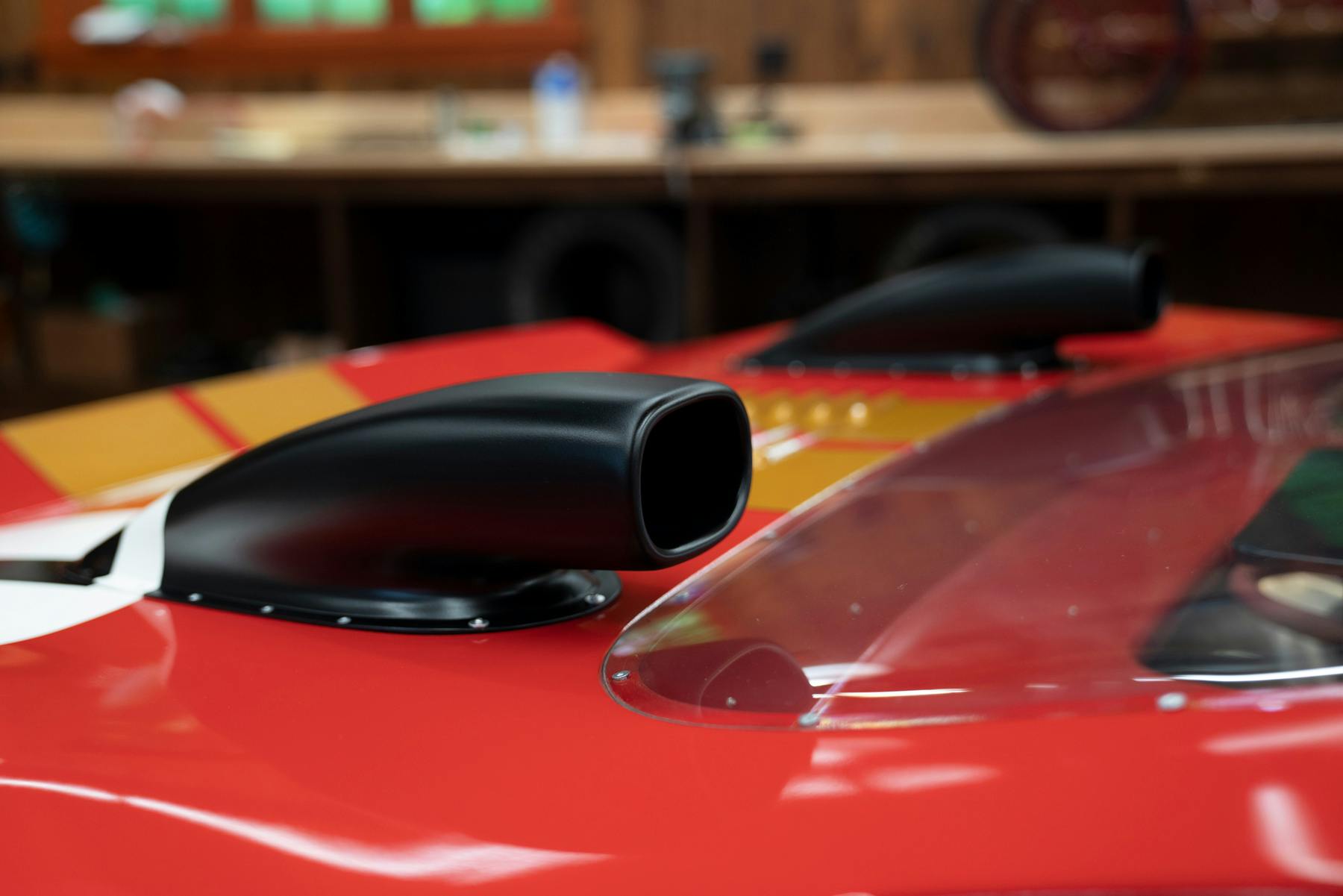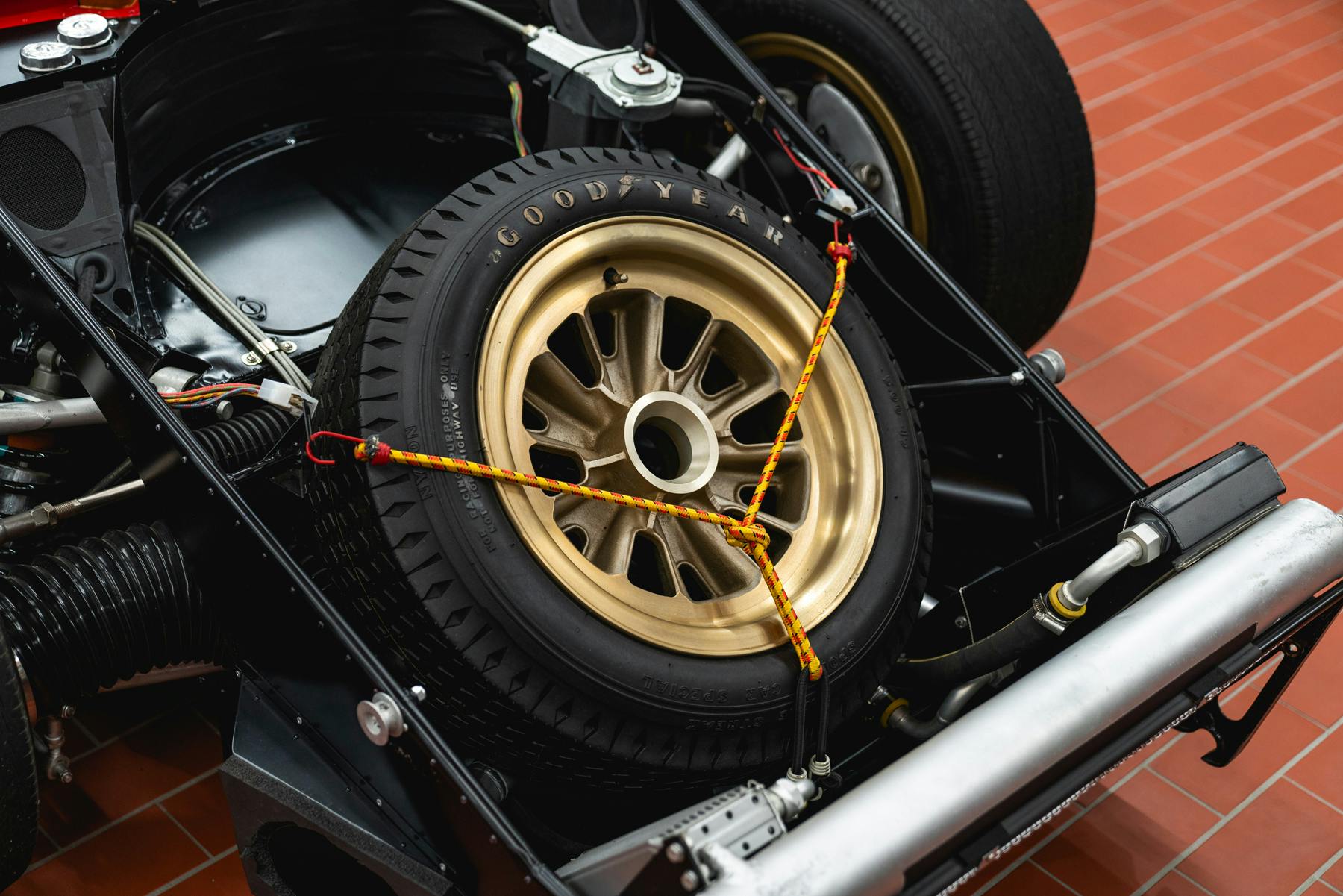Media | Articles
A teenager once smashed up this very special 1966 Ford GT40
GT40. The combination of those letters and numbers immediately brings to mind Ford’s breakthrough performance at the 1966 24 Hours of Le Mans, a 1-2-3 finish that broke Ferrari’s stranglehold on the famed endurance race and began a three-year championship run for the Blue Oval.
However, while the development of the GT40 ushered in a new era of racing and automotive production for Ford, it also affected the trajectory of three successful private teams. To help develop the cars further, Ford contracted with Shelby American, Holman-Moody, and Alan Mann Racing, and tasked them with perfecting the GT40.
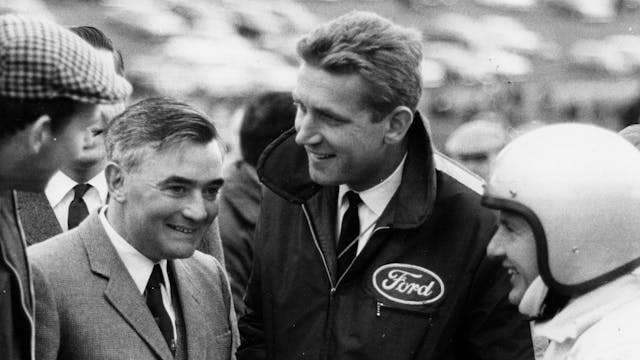
One of those privateer cars, a 1966 Ford GT40 Alan Mann Lightweight, will race across the auction block at Gooding and Company’s Pebble Beach sale August 13–14. The car is the first of two aluminum-bodied cars built for Mann on the GT40 Mk I chassis and powered by Ford’s 4.7-liter V-8. Designated serial number AMGT40/1, though often referred to as AM GT-1, it is the only aluminum-bodied Mk I to survive intact.
(Well, sort of intact. There was that one time when a teenager took it for a joyride. More about that later.)
Current owner Rex Myers had the GT40 meticulously restored over a 15-year period, and it was completed just in time for the 2019 Pebble Beach Concours d’Elegance, where it placed second in the Postwar Sports Class.
Marketplace
Buy and sell classics with confidence
“The timing couldn’t have been any better,” Myers says in a video produced by Gooding. “The first show we took it to was Pebble Beach … It was a good event to attend and a good event to come away from with an award.”
Alan Mann Racing, based in Byfleet, Surrey, found great success in touring car racing with the development of the Ford Cortina, and in 1964 it contracted with Ford. Mann attracted a bevy of star drivers—including Graham Hill, Jacky Ickx, Bo Ljungfeldt, Jackie Stewart, Jack Brabham, Denise McCluggage, Bob Bondurant, Bruce McLaren, and Mario Andretti—and its cars were immediately recognizable for their red-and-gold liveries.
To make the GT40 even more competitive, Mann reduced the car’s weight and made various adjustments to its chassis and suspension. He commissioned the U.K.’s Abbey Panels Ltd. to produce five special GT40 tubs according to his new, updated design. Only two were used to build Mann GT40s; the other three were incorporated into the Mk II program.
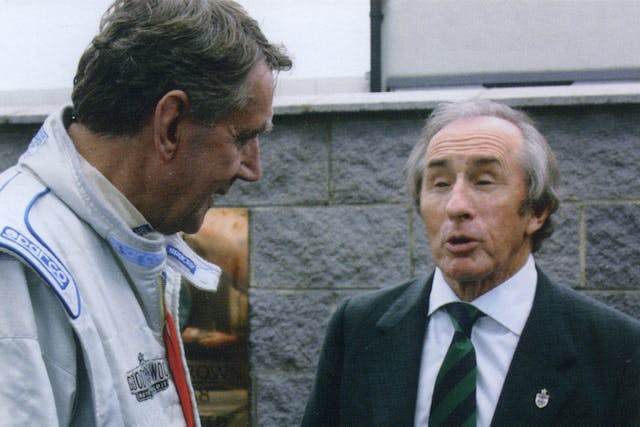
AM GT-1 is the lightest GT40 ever built, with a spec weight of 2160 pounds. It is equipped with a highly tuned, Weber-carbureted 289-cubic-inch V-8 engine, a five-speed ZF transaxle, and Halibrand knock-off wheels. In total, it features more than 100 updates over the standard Mk I competition car.
AM GT-1 was driven by Sir John Whitmore and Frank Gardner at the 12 Hours of Sebring in 1966. Qualifying in seventh position, it was running well before it was forced to retire with clutch problems.
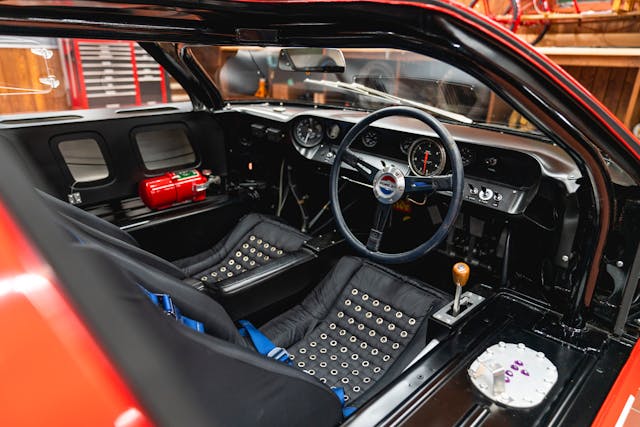
The following month during testing at Le Mans, it was the fourth-fastest car behind Ford’s experimental J-Car, a Mk II GT40, and the GT-1’s sister car, AM GT-2 (Myers says it reached 210 mph). Ultimately, Ford decided to retire the small-block-powered Alan Mann Lightweights and entered only its 7.0-liter Mk IIs in the historic 1966 24 Hours of Le Mans.
AM GT-1 was then sold to Holman-Moody and later passed through the hands of several private owners, including Douglas Chaplin, who bought it in 1969. Chaplin had the car modified for street use, including adding leather interior and A/C. One day, Chaplin had to go out of town and hired a teenager to keep an eye on his house. In a real-life scene from Ferris Bueller’s Day Off, the house sitter and a friend took the GT40 for a joy ride. It didn’t end well. The two crashed the car—at a high rate of speed, of course—just a mile from Chaplin’s house.
According to the SAAC Cobra and GT40 Registry, “The driver and passenger received minor injuries, and the police officer who responded to the crash marveled at the car’s strength, stating that without a doubt a less-sturdy vehicle would have also [brought] the coroner to the scene.” The GT40 didn’t fare well, though, and it was declared a total loss.
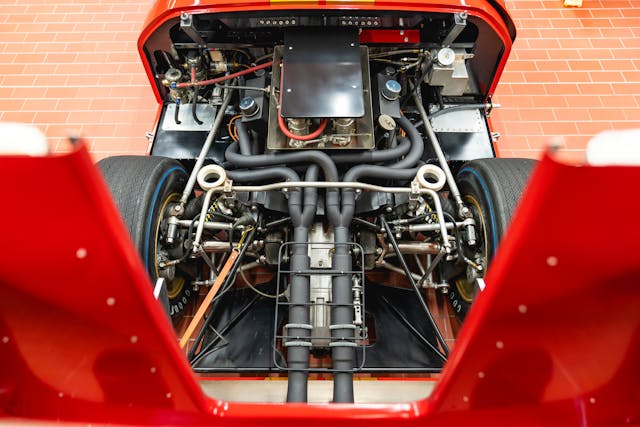
The wrecked car changed hands for more than a decade without any work being done, and even after Myers bought it in 1982 it sat for another two decades. Then in the early 2000s, he entrusted the GT40 to expert Bob Ash to bring it back to its original splendor. Ash worked on AM GT-1 for 15 years, and it now appears just as it did at Le Mans testing in 1966, when it was given roundel #16. In addition to Mann’s legendary red-and-gold livery, the car also wears white fender splashes near its headlights to distinguish it from AM GT-2 in the pits.
“The lightweight GT40s built for Alan Mann Racing were really unique variations on the Ford GT theme. This car, unfortunately, never got a chance to show how good it could have been,” says automotive author and columnist Colin Comer. “Thankfully, it was saved to be properly and quite accurately restored.”
Adds says Hagerty valuation editor Andrew Newton: “All competition GT40s are historically significant, and this one has a lot going for it, including a long restoration that resulted in an award at Pebble Beach. It’s also eligible for the Goodwood Revival (which is open to pre-1967 cars), and that’s a big plus.”

The question is, will someone dare race it? A 1966 Ford GT40 Alan Mann Lightweight in #1 (Concours) condition is valued at $5.3 million. This is the first time that AM GT-1 has been offered at public auction.
In addition to its successful showing at Pebble Beach in 2019, the car received a near-perfect score at the Muscle Car and Corvette Nationals and a special Le Mans award in a competition judged by the Shelby American Automobile Club.
After nearly 40 years of ownership, Myers will miss it. “It’s been [my] pride and joy obviously …,” he says. “I have a lot of stories that it can tell and a lot of stories that will stay with me forever.”


